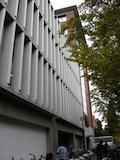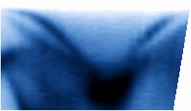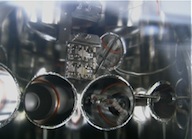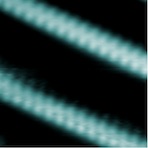 Welcome to the Surface Chemistry Lab., KUCHEM. We are studying the chemistry and physics of the solid surface from a vewpoint of the basic science. Our research interest includes structural and electronic properties of low-dimensional materials formed on solid surfaces, elementary surface chemical reactions, and physics and chemistry of single molecules, isolated or as well-defined small clusters.
Welcome to the Surface Chemistry Lab., KUCHEM. We are studying the chemistry and physics of the solid surface from a vewpoint of the basic science. Our research interest includes structural and electronic properties of low-dimensional materials formed on solid surfaces, elementary surface chemical reactions, and physics and chemistry of single molecules, isolated or as well-defined small clusters. 
We are also interested in phase transition phenomena at surfaces. In low-dimensional systems such as surfaces, a variety of types of phese transitions are driven by electron-electron and electron-phonon interactions. Recently we found a previously unknown type of the Peierls transition, which is driven by electron-phonon interaction in metals with low-dimensional electronic structure and is sometimes called charge-density-wave (CDW) phase transition. The new type is associated with strong electron-phonon coupling and long spacial coherence, yielding a transition mechanism totally different from those previously studied. We also found a new type of order-disorder transition, which is driven by the vacancy configurational entropy associated with the monomer-tetramer structural conversion of adatoms. We are studying these phase transitions by precision structure analysis/critical scattering by surface X-ray diffraction as well as detailed analysis of valence electronic structure bu means of angle-resolved photoemission and first-principles electronic structure calculation. (
Butsuri 63, 178-186 (2008); Surf. Sci. Rep. 61, 283-302 (2006).)
The surface is a nuisance also for researchers in the field of gas- and liquid-phase reactions, as it catalyses chemical reactions much more efficiently than in homogenious phases. This, on the other hand, suggests that the surface serves an important field for chemical reactions, both in industry as well as in our daily life. Recent progress in new research field such as fuel cell and hydrogen storage also highlights the importance of the elementary surface processes, which often play key roles in complicated overall processes. We utilize electron energy-loss spectroscopy, which is a high-sensitivity surface vibrational spectroscopy, to study elementary surface chemical processes. In particular, we are interested in the dynamic and microscopic behaviour of hydrogen at metal surfaces.

Recent progress in nanoscience and nanotechnology is fascinating. We in the Surface Chemistry Lab. are carrying out “single-molecule science” at surfaces, which may be an extreme of the nanoscience at this time. We isolate a single small molecule such as water and a well-defined clusters of such molecules on the surface, carry out vibrational and electronic spectroscopy, control the motion and reaction of the molecule by exciting peculiar vibrational modes by inelastic tunneling, and even study the electric conductivity of a single molecule and well-defined clusters.
